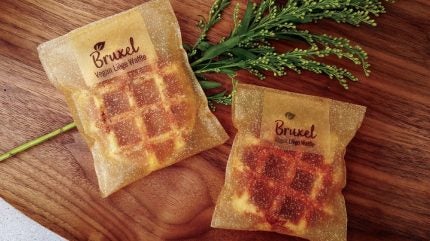
As the global fight against plastic waste intensifies, the packaging industry is under increasing pressure to develop sustainable solutions. One promising innovation is edible packaging—a concept that eliminates waste by allowing consumers to eat the packaging along with the product.
This approach not only reduces reliance on single-use plastics but also aligns with the circular economy model by minimising environmental impact.
Edible packaging is typically made from natural materials such as seaweed, rice, potato starch, and beeswax. These materials are biodegradable, meaning that even if they are not consumed, they will break down naturally without polluting the environment.
Many companies are now exploring how to incorporate edible packaging into mainstream production, particularly in food and beverage industries. For example, some brands have introduced edible straws, coffee cups, and even wrapping films that dissolve in water.
The shift towards edible packaging is driven by both consumer demand and regulatory changes. Governments worldwide are enforcing stricter packaging waste laws, encouraging businesses to rethink their strategies. At the same time, consumers are increasingly drawn to sustainable products, with many willing to pay a premium for eco-friendly alternatives.
As a result, edible packaging is not just an environmental solution but also a market-driven innovation that aligns with changing consumer expectations.
Benefits and challenges of edible packaging
One of the key advantages of edible packaging is its potential to cut waste at every stage of the supply chain. Traditional packaging materials, especially plastic, often end up in landfills or oceans, where they take centuries to decompose.
In contrast, edible packaging offers an immediate waste-free alternative, reducing pollution and conserving resources.
Edible packaging also presents opportunities for enhanced product experience. Brands can infuse packaging with flavours, nutrients, or functional ingredients such as probiotics, making it a value-added component rather than just a protective layer.
This enhances consumer engagement and offers a unique selling point for companies looking to differentiate their products in a competitive market.
However, despite its many advantages, edible packaging faces several challenges. One major issue is durability. Unlike plastic, which provides a long shelf life and strong protection against moisture and contamination, edible packaging materials are often more fragile.
This makes them less suitable for products that require extended storage or transportation over long distances.
Another challenge is regulatory approval. Food safety authorities must ensure that edible packaging meets strict hygiene and health standards before it can be widely adopted.
There is also the issue of consumer perception—some people may be reluctant to eat packaging due to concerns about cleanliness or unfamiliarity with the concept. Overcoming these barriers will require education and clear communication from brands about the benefits and safety of edible packaging.
The future of edible packaging in the industry
Despite the challenges, edible packaging is gaining traction in various sectors. The food industry, in particular, has been quick to embrace this innovation. Restaurants and cafes are experimenting with edible cups and cutlery, while manufacturers are developing edible films for snacks, chocolates, and dairy products.
Fast-food chains are also exploring ways to integrate edible wrappers into their packaging strategies.
Beyond food, there is potential for edible packaging to be used in pharmaceuticals and personal care products. For example, some companies are working on dissolvable capsules and pouches for medicine and supplements, reducing waste from traditional blister packs and plastic bottles.
Similarly, edible sachets for single-use cosmetic products could help reduce plastic consumption in the beauty industry.
As technology advances, edible packaging is likely to become more durable and versatile, making it a viable alternative for a wider range of applications. Research and development efforts are focusing on improving the structural integrity of edible materials while maintaining their biodegradability.
In addition, collaborations between packaging companies, food producers, and sustainability experts will play a crucial role in driving innovation and bringing edible packaging into the mainstream.
For businesses, investing in edible packaging is not just an ethical choice but also a strategic one. As sustainability becomes a key differentiator in the market, companies that adopt eco-friendly solutions early will gain a competitive advantage.
Consumers are increasingly prioritising brands that demonstrate a commitment to reducing environmental impact, and edible packaging aligns with this growing trend.
In conclusion, edible packaging represents a significant step towards a more sustainable future in the packaging industry. While challenges remain, ongoing research and consumer awareness efforts are paving the way for wider adoption.
As demand for sustainable alternatives continues to rise, edible packaging has the potential to reshape the industry and contribute to a world with less waste.



